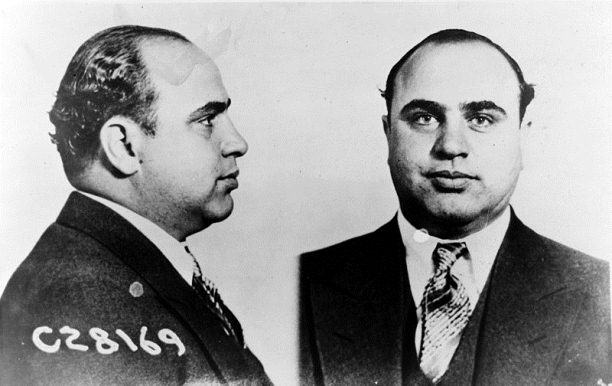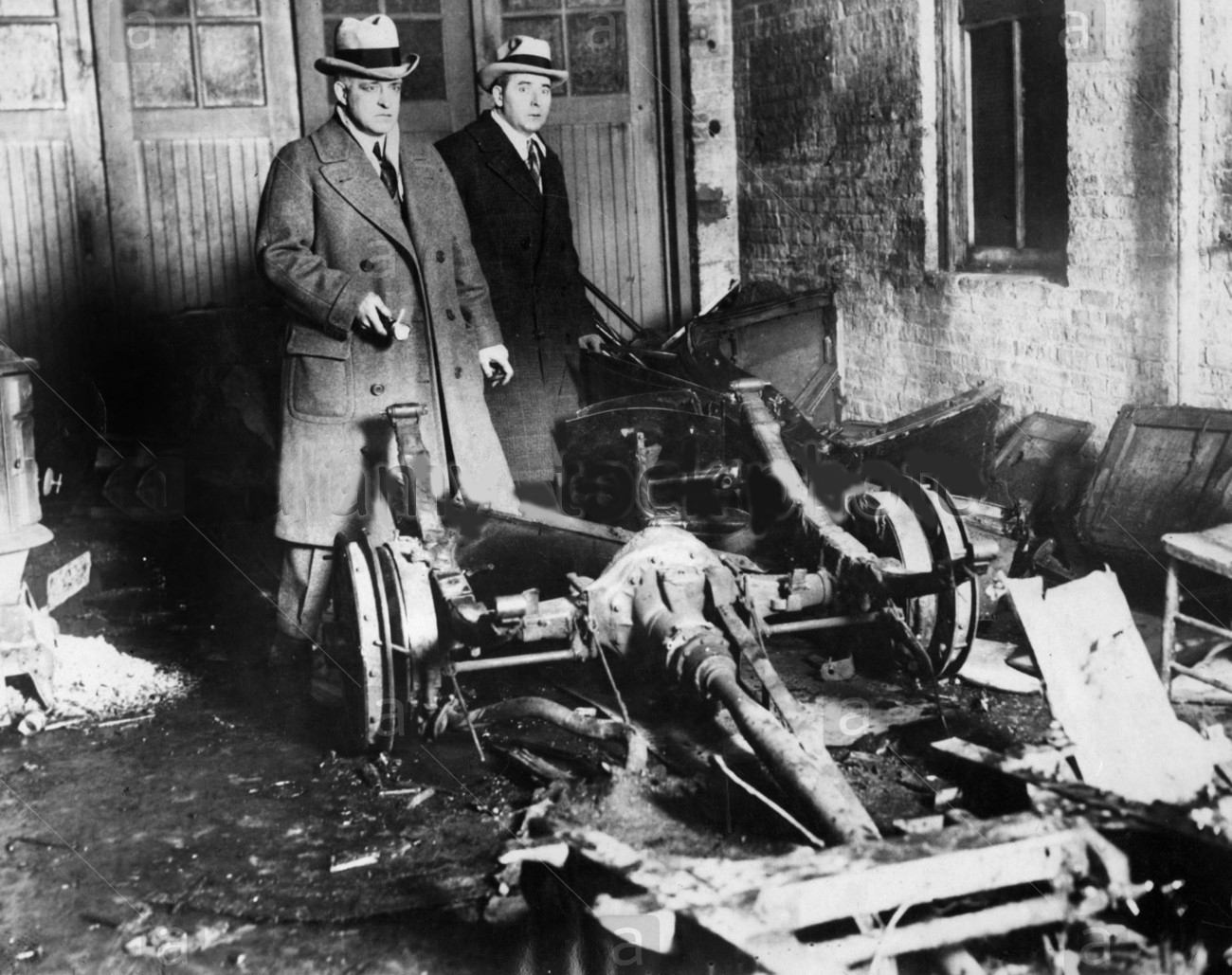
The National Prohibition Act was passed as a law to remove the production of the distribution of alcohol. The Prohibition Act was passed on January 19, 1919, and even though the act was to benefit society in the harmful effects of consuming alcohol, the results were far worse. Initiating the Prohibition Act promoted a higher rise in crime throughout America. They were eliminating the consumption of alcohol, which led to an increase in the production and distribution of alcohol illegally. Al Capone, the notorious gang leader of the Chicago Outfit, organized one of the biggest alcohol distribution businesses in Chicago and played an essential role in the consumption of alcohol. This business has captivated the attention of other gangs, and the rising tension between the Chicago Outfit and North Side Gang has brought more conflict in the race to monopolize this industry.
As the Chicago Outfit Gang continues to monopolize the underground production and distribution of alcohol, attention continues to rise. The North Side Gang, which has had its business market of “Bootlegging” and profiting off the Prohibition Act through criminal activities, has taken a hit on its profits. Even though their business has taken the position to compete for profits with other gangs, Johnny Torrio knew that they would rally gangs, forcing the Chicago Outfit to be involved in potential gang wars. Chicago has become a battlefield between two groups trying to monopolize the illegal industry that can make them money.
Still, the rivalry between both gangs is rooted more profound than the fight to control their illegal industry of distributing alcohol. Through the “Bootlegging” and crimes that were performed by both gangs in Chicago, the North Siders want to approach the Chicago Outfit’s territory and have been involved with many violent incidents with Capone’s associates.
As Al Capone continues to thrive in the illegal liquor production industry, the North Side, led by “Bugs Moran,” known as a notorious gang leader who held many ruthless operations, has decided to infiltrate one of Al Capone’s beer shipments. In 1921, he hijacked one of Al Capone’s beer shipments, and they often ran into trouble.
The hijacked beer shipments and multiple events that sparked the rise in tension between Al Capone and Bugs Moran have led to the motive to go after the North Side and eliminate Bugs Moran. In doing so, on the morning of February 14, 1929, at 10:30 am, four men posing as police officers entered a garage owned by Moran’s gang. At “2122 North Clark Street,” seven of Moran’s associates lined up against a wall and executed them in a brutal spasm of gunfire.
This tragic event shocked the nation and drew widespread attention to the violence of the streets of Chicago to be forever known as the St. Valentine’s Massacre. Yet, when this brutal event gathered the attention of many, it showed the actual effects of how the Prohibition Act affected the increase of organized crime. While Al Capone was the one who initially organized the murder of these men, he was never targeted and blamed for the crime immediately.
The gunshots were heard across the streets of Chicago, and when police officers arrived at the scene to discover that some of the men who were attempted to be killed had survived despite having 14 bullet wounds. Frank Gusneberg, who was affiliated with the North Side and had a reputation for numerous robberies and murders, was rushed to the hospital to be examined. Despite his survival, when questioned by the police about the St Valentine Massacre, he refused to talk. Frank Gusenberg was too fatal, and resulted in his death hours later.

Although Frank survived at the moment, other victims, such as Peter Gusenberg, Albert Kachellek, Adam Weinshank, Reinhardt Schwimmer, and John May, were all the victims who were murdered at the scene.
To maintain their identity anonymously, the accomplices had dressed themselves to blend with civilians. As a result of this, when the police investigated the scene as well as asked the civilians who were near the crime scene, it was no surprise that the four men were not identified. However, witnesses did acknowledge that they were wearing police uniforms or long coats with hats covering their faces from being revealed. Their target shifted after finding no clue as to who the suspects might be.
Immediate suspicion fell on both Jack McGurn, Fred Burke, and other members who are affiliated with Al Capone’s organization due to the analysis of the forensic team who was in charge of building a lead. Jack McGurn, who, to no surprise, was suspected of being one of the four men who assassinated the victims of the St Valentine’s Massacre due to their reputation. Jack McGurn was known to be one of Al Capone’s hitmen who had been involved in multiple murders and crimes.
Fred Burke, another member of the Chicago Outfit, has been suspected of the crime because of his reputation for being involved in acts of violence and murder. Through his reputation, he has been linked with robbery and is considered one of the most successful members of the Chicago Outfit Gang. Even so, most of these men were wrongly convicted and were not the ones who performed such a heinous crime.
Dr. Calvin Hooker Goddard, also known as the “father of Modern Firearms Identification,” was asked to take an essential role in the St Valentine’s Massacre evaluation in 1929. He specialized in the discovery of firearms and was asked to evaluate the bullets that were recovered during the crime scene. After careful analysis and examination, through his work, he found that none of the weapons led to Al Capone’s gang members but was later discovered when they recovered the gun.
Dr. Calvin Hooker Goddard not only gave the police department a shift in perspective, one step closer to the suspect but also evaluated the depth of the crime scene, telling everyone that there’s more behind the story.
At the time and place of the incident, Al Capone was in Florida. Although he was not present during the horrific event, after evaluating the scene, suspicions started to point in his direction.
As the investigation took a significant turn appointing the crime to be connected with Al Capone, law enforcement officials identified that among Al Capone’s men, John Scalise, Albert Anselmi, Jack Mcgurn, and Frank Rio, were formally charged in connection with the massacre. When the eye of the public shifted toward Al Capone’s men, out of fear, Al Capone murdered all the men except for Jack McGurn in May 1929.
Due to Jack McGurn’s loyalty to Al Capone, even while serving criminal charges, they were dismissed after police found a lack of evidence connecting him to the massacre. Even though the forensic team managed to trace the weapon to Al Capone’s men, they soon dismissed the case due to the lack of information and witnesses. Even though the seven men who were killed had an affiliation with the North Side Gang, they were not able to provide enough information to find the culprits.
Lynn Dumenil’s “The Modern Temper: American Culture and Society in the 1920s” provides a valuable understanding of the cultural backdrop against which the St. Valentine’s Day Massacre unfolded. Dumenil’s work explores the shifts in American society during the 1920s, which focused on attitudes, behaviors, and values.
One of the themes in Dumenil’s book is the tension between tradition and modernity. The 1920s witnessed significant social changes, including urbanization, industrialization, and the mass consumer culture. These changes brought about a sense of traditional values that clashed with the realities of modern life.
This theme of societal transition is relevant to the context of the St. Valentine’s Day Massacre. The Prohibition era, which brought significant change within the 1920s, clashed between traditional moral values and the realities of a changing society. However, rather than eliminating drinking, Prohibition gave rise to a thriving underground economy dominated by organized crime syndicates like those led by Al Capone.
Dumenil also explores cultural conflict during the 1920s, as traditionalists and modernists clashed over issues such as religion, gender roles, and morality. This cultural tension is reflected in the two power gangs of Chicago Outfit and North Side Gang. The violent confrontations between the North Side Gang and the Chicago Outfit were not only about controlling the underground criminal business trade but also about gaining dominance, such as in a territorial aspect.
Furthermore, Dumenil examines the role of the media and how they shifted the public’s view during the 1920s. Events like the St. Valentine’s Day Massacre captured the public’s attention and highlighted the violence in American cities. Newspapers and radio broadcasts contributed to shaping the image of Al Capone.
In essence, Dumenil’s exploration of the modern temper the 1920s provides a broader understanding of social, economic, and cultural forces that affected the St. Valentine’s Day Massacre perspective. The massacre serves as a reminder of the dark side of the Roaring Twenties, where the pursuit of power, corruption, and violence coexisted.
MAP OF ALL THE EVENTS LEADING BEFORE AND AFTER ST. VALENTINE MASSACRE
Citations:
“Bureau of Alcohol, Tobacco, Firearms and Explosives.” 18th Amendment 1919 (National Prohibition Act) | Bureau of Alcohol, Tobacco, Firearms and Explosives. Accessed May 8, 2024.
“Bureau of Alcohol, Tobacco, Firearms and Explosives.” 18th Amendment 1919 (National Prohibition Act) | Bureau of Alcohol, Tobacco, Firearms and Explosives. Accessed May 8, 2024. https://www.atf.gov/our-history/timeline/18th-amendment-1919-national-prohibition-act#:~:text=January%2019%2C%201919%2C%20Congress%20ratified,for%20anything%20beyond%20token%20enforcement.
“Chicago Outfit.” Wikipedia, May 8, 2024. https://en.wikipedia.org/wiki/Chicago_Outfit.
“North Side Gang.” Wikipedia, March 25, 2024. https://en.wikipedia.org/wiki/North_Side_Gang.
“Johnny Torrio.” Encyclopædia Britannica, April 12, 2024. https://www.britannica.com/biography/Johnny-Torrio.
“Frank Gusenberg.” Wikipedia, May 8, 2024. https://en.wikipedia.org/wiki/Frank_Gusenberg#:~:text=Between%201909%20and%201914%2C%20Gusenberg,of%20the%20gang%27s%20chief%20hitmen.
“Jack McGurn.” Wikipedia, March 29, 2024. https://en.wikipedia.org/wiki/Jack_McGurn.
“Fred Burke.” Wikipedia, April 29, 2024. https://en.wikipedia.org/wiki/Fred_Burke.State. Accessed May 9, 2024. https://www.fdle.state.fl.us/Forensics/RHDocuments/goddard.
